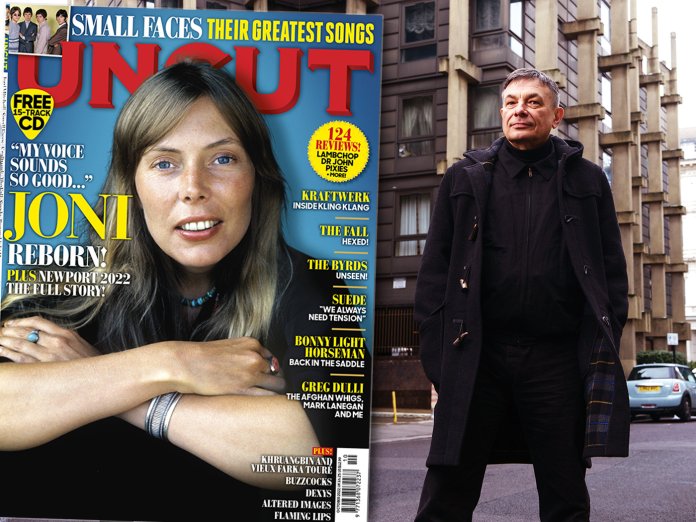Karl Bartos on his days in Kraftwerk, the secrets of Kling Klang and Cliff Richard’s hitherto undisclosed influence on New York electro. In the latest issue of Uncut magazine – in UK shops now and available to buy from our online store, he tells Sam Richards more.
For a musician synonymous with the interface between music and technology, Karl Bartos’ Hamburg home studio is surprisingly spartan. “I have a piano, a Martin D-28 guitar and a computer,” he reveals. “The core of my old equipment like the MiniMoog and the Arp synthesiser is still there, but they seem to retire now. Usually I go out and record something in the streets.”
Rather than creating his own sounds, Bartos is currently concerned with paying deeper attention to those that already exist around us. “Ambience is really great. I’ve learned a lot from John Cage about that – he said, the great symphony is if you go to a crossroads and listen to the rhythm of the cars. Around here, you hear ships all the time. But basically anything makes a symphony. It’s really a great variety of noises in this world.”
Bartos was always a versatile musician. In his memoir The Sound Of The Machine, recently translated into English, he describes hot-footing it between Kraftwerk’s Kling Kling studio and the orchestra pit at the Deutsche Oper am Rhein, while also playing drums in a rock’n’roll band and vibraphone in a jazz quartet. The range of influences that powered minimalist masterpieces like The Man-Machine and Computer World was broader than you think. “I always listen to music as a whole,” says Bartos, settling down to answer your questions. “It’s all the sound of being human.”
Can you describe your feelings the first time you entered Kling Klang studio and played the electronic drums?
– John Densmore, Sunderland
The atmosphere was like what you can read about Andy Warhol’s Factory. It was this big variety of useless things and useful things. In one corner of the room I saw a neon lamp, and so I had this feeling of an art place, not really a musical studio. The first time I went there, we played at a low level. I had these knitting needles in my hand and the sound of them hitting the metal pad was very loud in the room. You can’t really use your technique, if you have a knitting needle! So I get along, and it was OK. But the next time we played full volume, and that makes a difference because then suddenly the sounds were much louder than a normal drum set. The articulation was very low, you had just one boom! But over the years, we developed a style of modulating it through machines, technical effects, and so on. It was an interesting challenge, and it opened my ears to things I knew already. Sly & The Family Stone, they were using a drum machine but I didn’t notice so much because it was deep in the music. What happened with Kraftwerk was the aestheticisation of technology. Like the Eiffel Tower – there’s no facade, it’s just this pure skeleton.
PICK UP THE NEW UNCUT FOR THE FULL STORY



